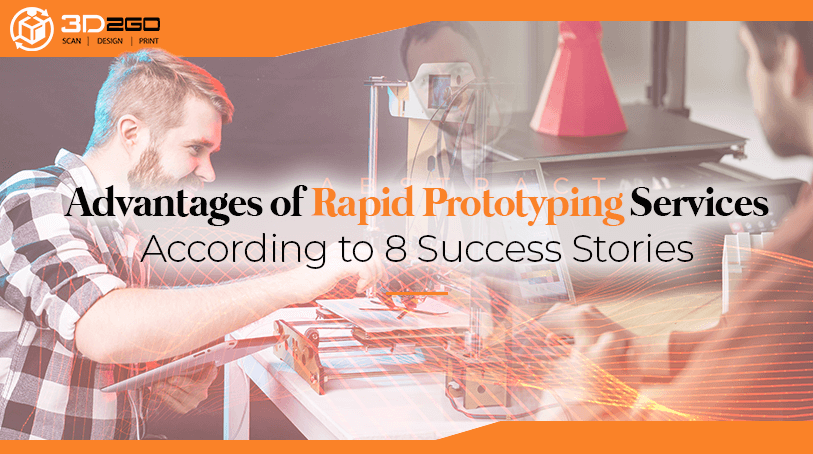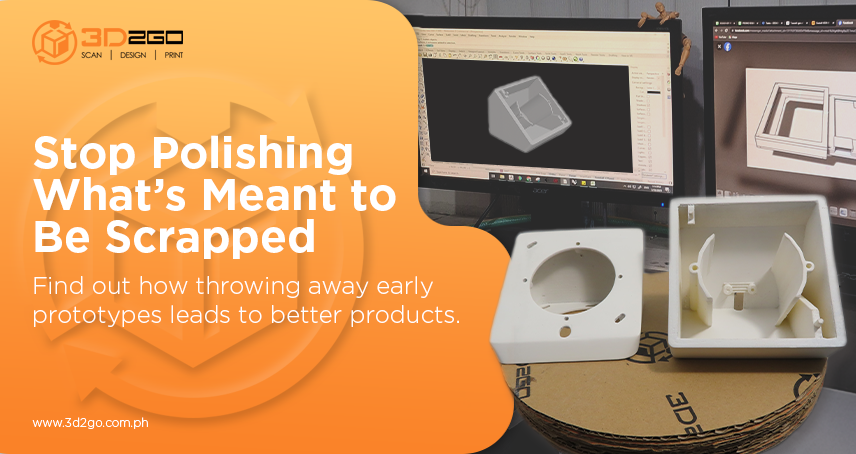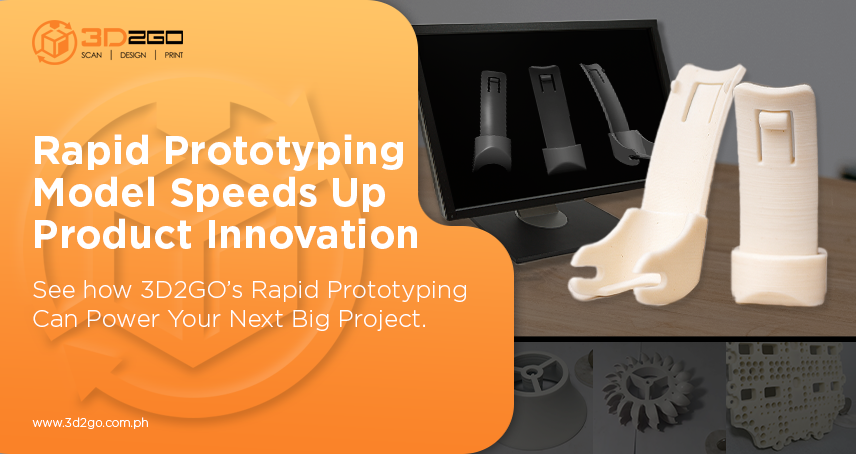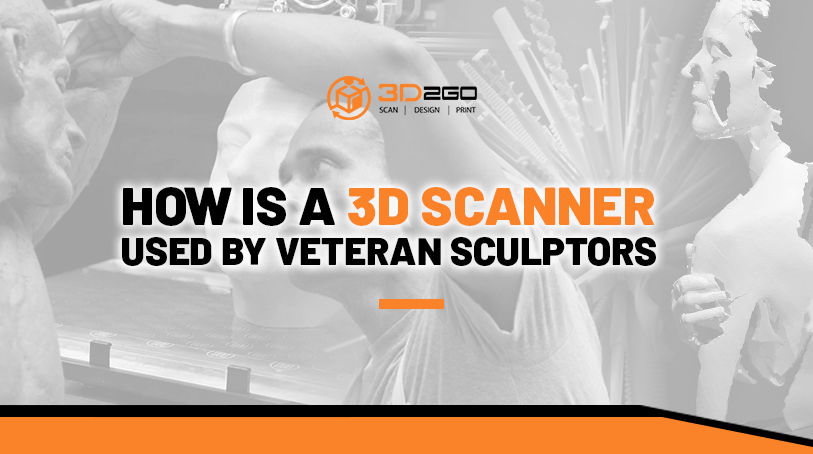
How Is A 3D Scanner Used By Veteran Sculptors
August 3, 2022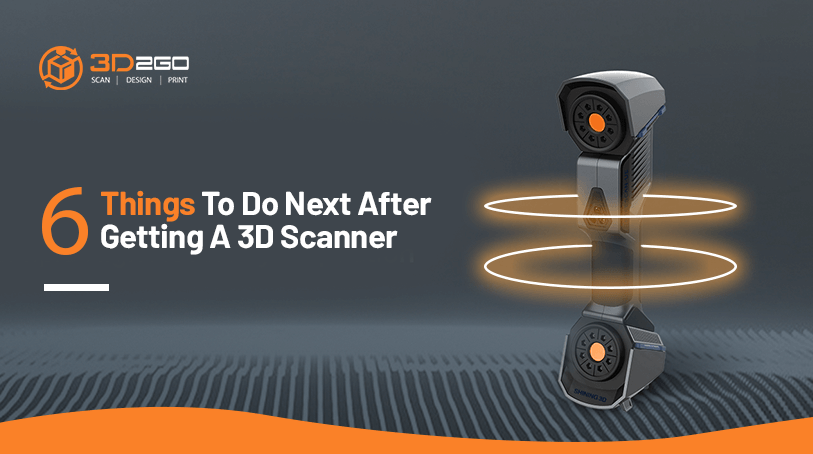
6 Things To Do Next After Getting A 3D Scanner
August 6, 2022Here are stories on how rapid prototyping services helped businesses
Prototyping is an essential element of the design and engineering process. Traditionally, though, it has created challenges as design teams strive to create makeshift models.
Rapid prototyping, in contrast, offers many advantages and applications that set it apart from traditional prototyping.
Customization
Being able to differentiate your product from others on the market is vital if you want to stand out and be memorable.
3D printing is just one aspect of rapid prototyping, but it’s a good representation of the capabilities that this process can offer. It’s a step needed to achieve the uniqueness of a product.
Let’s look at an example with cyclists.
By printing for custom bicycles, it is possible to choose from a variety of different colors on practically any part of the bike.
This is great for those that choose to stand out from the crowd with their custom bike, as it allows you to have a one-of-a-kind ride. It also allows those bike trekkers who want a certain amount of comfort on their ride. Because most trekking bikes are manufactured for general mountain use, some of the personal of the riders are not taken into consideration
Competitive advantage is key in product design, and being able to take a standard product that you’re planning to create and adding in any number of features will give you just that.
Rapid prototyping allows you to customize the product however you want, even if you want to try out ten different customizations to test which one works best.
Reduced Costs
Rapid prototyping gives you much more control over your costs. It also allows you to reduce them drastically while still producing a magnificent end product.
This is vital. Especially for a small company that is just starting out, or one that is trying to squeeze every drop of price out so they can beat their competitor’s in the market.
There are numerous ways it can reduce the cost of your prototype.
One example is an electrical socket for mining equipment. The fixture cost, made of aluminum, was around ₱3,600.
However, instead of designing and purchasing that immediately, we 3D printed the part from an outside company and purchased a set of 20 pieces for under ₱360.
That allowed us to test and reconfigure the design so that we made sure the product would work before purchasing the mold.
Higher Profit Margins
Higher profit margins go hand-in-hand with reduced costs.
There is always a benefit economically to purchasing more pieces at one time.
But 3D printing is not entirely so reliant on that scale for its price. Much of the price improvement is the fixturing cost being spread out over a more significant number of pieces.
With 3D printing or rapid prototyping, this fixturing is unnecessary, just by the nature of the beast.
For instance, if you are under a heavy financial constraint but are attempting to produce and sell a new brand of a cell phone case, you may be in a bind.
It costs ₱250 per case sold if you only plan to sell 50 of them, which only gives a slim profit margin. That may not be enough to fund the next steps in your venture, sending your new company out of business pretty quickly.
To make the necessary profit margin, you’d need to get that price down to $150 per case. To do that, you’ll have to buy in bulk, purchasing potentially a thousand or more.
Either way, your company is out of money pretty fast. But if you could get the initial run of 50 cases for $3 per case, you could sell enough to take the next steps in your business, maybe even preparing fixturing so you can get the price down even further.
More Sales
3D printing offers something no other marketing campaign does. A chance to see and use the product.
Compared with a photo or video of an object, it is extremely tough to match the impact of seeing a realized piece sitting in front of you that you can see and hold.
Many times, the products we see advertised are not quite as they seem.
A watch that’s not as much “rose gold” as it is “Hello Kitty pink.”
There’s no getting around this unless you can see the product in person.
Rapid prototyping allows us to market real products to individuals that they can see and feel, interacting with them as they would once they’ve purchased them. It’s like a test drive for every product you could imagine.
This is especially useful in highly specialized and customized fields. Once again, customization is a massive benefit of this process, but here it can be used to prototype a particular product for a client who may only be considering purchasing it.
Instant Feedback
At all levels of the process, feedback is critical. In fact, many of the stages of product development center entirely around feedback. The Voice of the Customer is a type of feedback where you hear what the market demands and hates about certain products.
Product testing is gathering quantifiable feedback about the performance of a product.
Using rapid prototyping or 3D printing creates a realistic and testable product. With a real product in front of you, you can simulate any test that comes to mind and actually figure out if the product performs the way it’s supposed to.
Beyond the testing phase, your company will get feedback at another crucial phase that is as important as ever, initial user testing. You can send the actual product to potential customers and have them use it.
This accomplishes two things:
- It evaluates the product and compares it to the initial voice of the customer.
- Building an identity and some loyalty.
Better Market Visibility
The faster you can get products to the market, and the more products you can get out there, the more name recognition you will have.
This strategy is currently being employed with great success by major mattress firms.
This is actually very useful because they’re pushing their visibility to a point where, when you think of mattress stores, you initially think of their products.
As they engrain themselves into the consciousness of consumers, they also push competitors out of the way. When this task is complete, and they’ve gained a solid market share, they close down the underperforming stores and consolidate them into the most profitable location.
You likely won’t do exactly that, but the concept is similar. You will push your product out there as much and as quickly as possible. The more you get the product out there, the more well-known your name is.
Rapid prototyping gives you a huge advantage in this arena, in fact, several advantages.
Higher Complexity
3D printing can create things so complex and delicate. It can mimic the structure of internal organs, and people have even received 3D printed veins and arteries through various surgeries.
This level of complexity is mind-blowing. If you can incorporate even a tiny fraction of it into your product, you will amaze any potential client.
An example is creating 3D printed prototypes to test out for a product. After creating them, the product owner may explicitly ask for the prototype to be made more simple.
The structures of the prototype may be too complex and delicate. It is possible for the manufacturing process to be unable to replicate them as it stood at that time.
Fully functional designs for a multi-billion-dollar corporation were unable to replicate. Designers were doing it faster and cheaper.
When set up for the destructive testing to measure crush strength for the pieces, they outperformed other aluminum cast ones. This is because the internal designs were more intricate and sturdier.
That is why so many companies are turning away from traditional manufacturing and focusing their efforts more on 3D printing and rapid prototyping.
Rapid prototyping companies is the future of product development
Rapid prototyping is legitimately the future of product manufacturing, design, and testing with the stated advantages. It will eventually revolutionize the world.
The hypothetical future of technology is around the corner. It starts with 3D printing and rapid manufacturing and prototyping.
Hypothetically, one day, technology will develop that will allow you to reach into a bucket of some amorphous material and pull out the exact product you need, mainly 3D printing something in seconds.
This technology is that which we’re staring at in the face. Observing 3D printing has become more and more capable and used in more incredible industries.
The advantages for your business are immense and hard to ignore. Regardless of whatever product you’re attempting to bring to the market, rapid prototyping will make that transition smoother, faster, and more profitable.
As long as you have a designer and prototype who is skilled with the technology, you can get through the process with immense ease and create something to blow your clients away.
3D2GO offering different types of rapid prototyping
Not all types of products are suited for rapid prototyping. Some might need special techniques, tools, or materials.
Let’s take a look at the other methods for 3D rapid prototyping.
| Type | Feature |
| Stereolithography (SLA) or Vat Photopolymerization | Uses a bath of photosensitive liquid which is solidified layer-by-layer using a computer-controlled ultraviolet (UV) light. |
| Selective Laser Sintering (SLS) | • Both metal and plastic prototyping
• Uses a powder bed to build a prototype one layer at a time using a laser to heat and sinter the powdered material. • Finished product is usually rough and may require secondary work to finish. |
| Fused Deposition Modelling (FDM) or Material Jetting | • Found in most non-industrial desktop 3D printers.
• Uses a spool of thermoplastic filament. |
| Selective Laser Melting (SLM) or Powder Bed Fusion | • Powder bed-based fusion process
• Uses a fine metal powder • Common materials include titanium, aluminum, stainless steel, and cobalt chrome alloys. |
| Laminated Object Manufacturing (LOM) or Sheet Lamination | Builds up a series of thin laminates that have been accurately cut with laser beams or another cutting device to create the CAD pattern design. |
| Digital Light Processing (DLP) | • Requires the use of support structures and post-build curing.
• The part is continuously pulled from a vat, without the use of layers • Crosses a light barrier that alters its configuration to create the desired cross-sectional pattern on the plastic. |
| Binder Jetting | • Allows for one or many parts to be printed at one time
• Uses a powder bed onto which nozzles spray micro-fine droplets of a liquid to bond the powder particles together to form a layer of the part. • Each layer may then be compacted by a roller before the next layer of powder is laid down and the process begins again. • Parts may be cured in an oven to burn off the binding agent and fuse the powder into a coherent part. |
The most trusted rapid prototyping processor in the Philippines
To give you the best output, we use quality equipment. Softwares and programs are being trusted by other companies in the industry.
3D2GO is not only for personalized entertainment purposes of 3D printing. We have also partnered with professionals and offered our end-to-end 3D printing service.
Get in touch with us by sending us files in .obj or .stil format in our email address management@my3d.com.ph. You can also reach us through our Facebook and Instagram pages today!


